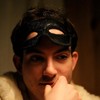Although some publications, like Salon, took Elinor Burkett to task for questioning Caitlyn's identity in an op-ed she penned for the New York Times, other news outlets and social media users have pounced on prominent black celebrities who have defended Rachel's lifestyle. When Rihanna called Rachel "a bit of a hero" in a lengthy Vanity Fair profile, the pop star inspired a day's worth of outraged tweets.In the aftermath of her newfound infamy, Rachel resigned from her unpaid role at the NAACP; the Spokane City Council voted to remove her from a volunteer Police Ombudsman Commission, and Eastern Washington University declined to renew her quarterly adjunct professor contract. Broke and seemingly unemployable (with the exception of a six-figure Vivid Entertainment porn offer she turned down), Rachel wrote a memoir proposal. She hoped she would receive an advance big enough to support herself and her two sons for as long as it takes to weather the storm, but she says publishers refused to sign her. Today, she says she remains out of work besides doing black women's hair part-time and estimates a third of her friends have stopped speaking to her.In the summer I like to wear braids and dreads—that's just me.
"Spokane sucks. It's the armpit of America," Rachel's son teenage son Franklin says.But this is the place she has chosen to call home for three years. Although Rachel and her friends say she has hovered above and below the poverty line her entire life, she maintains a pretty two-bedroom house. She sleeps in a bedroom, Franklin lives in the basement, and baby Langston will reside in the room where Izaiah lived before he went to college.Pumpkins line her front steps in autumn, and inside her walls are adorned with her own artwork: a portrait of Pariah, the character in the Spike Lee–produced movie, over the fireplace; a drawing of the KKK chasing a black girl above Rachel's bed; and a painting of her adopted son Izaiah as a baby next to the dining room table. In the living room, a Langston Hughes poetry book lies on a chest.Read More: At Home with Rachel Dolezal
Rachel claims she was born in this teepee. Archival images courtesy of Rachel Dolezal
My mother and sister set themselves to cutting out chains of human profiles, dozens of stick people holding hands. My team and I were to tape these figures around the room before the debate to supplement a diagram distributed by the National Right to Life showing the number of casualties in each of the American wars compared to the number of abortions since 1973. Each figure represented ten thousand casualties. The Revolutionary War had a single stick figure for the roughly 4,000 colonists killed. There was a long row of figures for the Civil War, slightly more for the two World Wars combined, three figures for the Korean War, and six for nearly 60,000 US deaths in Vietnam. All told, this came to more than a million casualties. For the number of abortions since 1973, there were rows and rows of stick figures representing many millions, and the contrast was meant to be jarring.
Rachel with "Ebony Tresses," the book she made for her adopted sister Esther
Paper doll with changeable hairstyles from "Ebony Tresses"
At his request, Carl's name has been changed.
The church became Rachel's community, and she developed a very close bond with its parishioners, particularly with Kelly, an older woman with whom Rachel would choreograph praise dances to be performed at services.It's so hard to explain this to people: I don't feel white.
Kelly's name has been changed.
A few weeks later, Carl says, a mutual friend set them up for homecoming. "My black girlfriends hooked me up," Rachel says. "They got this dress with a split right up, did my hair, my makeup. I had red lipstick on. They were like, 'Damn, you're so hot!' I was feeling myself. I was dancing. They were like, 'She has rhythm!'" This was one of the first times Rachel wore sexy clothes. She remembers the night as an evening of belonging.Kelly, the woman she lived with, though, remembers the pain and confusion Rachel's identity brought Rachel. "I [had] numerous conversations with Rachel about her race…about how she knew in her heart that she was supposed to be born black. She felt that she had a stronger connection to the black race. Her struggle was tear-jerking real," Kelly says in the same Facebook note. "We cried together many times." Still, she says, even though she tried to understand how Rachel felt on the inside, she also used scripture to try and convince Rachel that her racial identity issues were just a phase.Her struggle was tear-jerking real.
Rachel brought her baby Franklin to her graduation from Howard University.
Rachel and Franklin play near a river around the time she claims she began identifying as black.
Illustration by Jessica Olah
